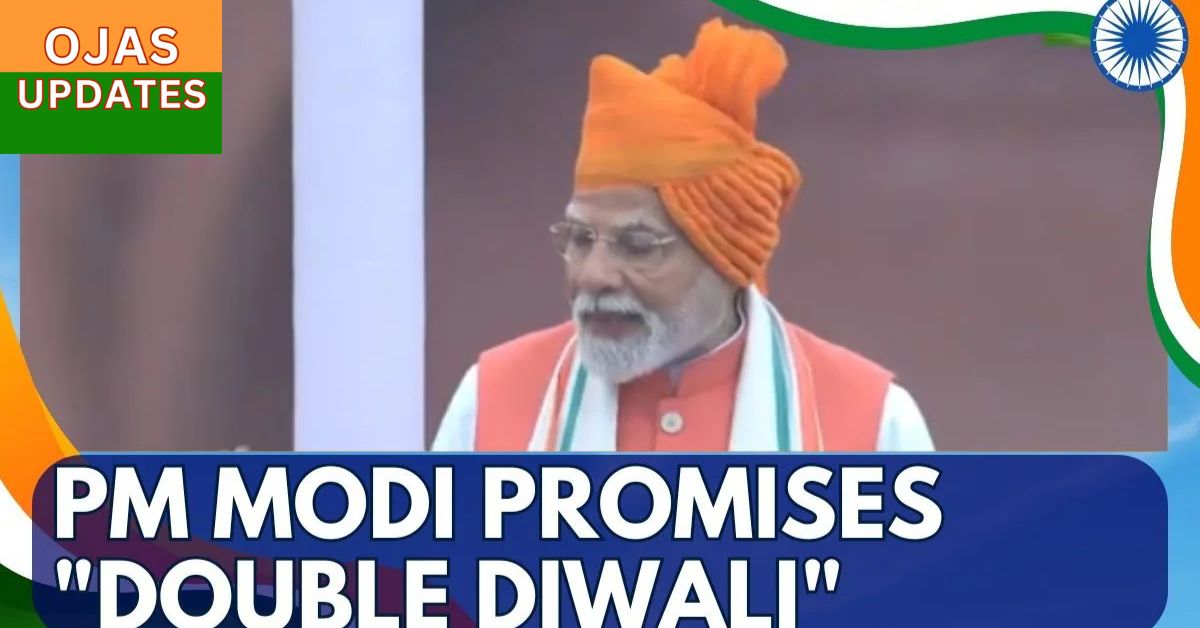In a striking highlight of his Independence Day address on August 15, 2025, Prime Minister Narendra Modi unveiled a bold and resonant declaration: “This Diwali, I am going to make it a double Diwali for you.” He prefaced this promise by hinting at a “next-generation” overhaul of India’s Goods and Services Tax (GST), designed to significantly ease the tax burden on everyday items and deliver financial relief across the nation.
The imagery of a “double Diwali”—a festival traditionally synonymous with prosperity and light—strikes a chord with citizens seeking tangible economic benefits ahead of the festival season. Beyond festive cheer, it symbolizes a strategic promise: deeper fiscal relief tied to modernizing one of the most critical elements of India’s tax architecture.
What Are the “Next‑Generation GST Reforms”?
What sets these reforms apart is their focus on simplifying GST’s multi-tier slab structure that currently spans 5%, 12%, 18%, and 28%. A ministerial committee is now tasked with consolidating these tiers—particularly targeting the 12% slab that covers essentials like packaged foods, apparel, and hotel stays—potentially shifting many of these to the 5% bracket.
Financial analysts, including those from Citi, estimate that this shift may cost the government up to ₹500 billion in revenue, roughly 0.15% of GDP. Yet, they say, the resultant stimulus for households could reach as much as 0.6%–0.7% of GDP in the 2025–26 fiscal year.
From a broader perspective, the reform is also presented as an opportunity to streamline compliance, improve transparency, and make business operations—and life for ordinary citizens—more seamless.
Why Now? The Economic and Political Calculus
The timing of this reform announcement—on Independence Day, with Diwali just over two months away—appears both symbolic and strategic. Diwali is India’s busiest consumer festival, heavily linked with household spending, small businesses, and livelihoods. A well‑timed tax relief could boost festive consumption, especially on essentials, while strengthening the economic messaging ahead of upcoming budgeting cycles and domestic elections.
Moreover, calling these reforms “next-generation” gives them a futuristic edge—suggesting that India is not just tinkering with tax slabs but preparing tax infrastructure for new-age commerce, digital transformation, and ease of doing business in a globalized world.
Who Stands to Benefit Most?
- Households and Consumers
Everyday items like food, apparel, and lodging becoming cheaper—particularly for the middle and lower income segments—could significantly boost buying capacity during a critical spending season. - Small Businesses & MSMEs
With simpler slabs and possibly smoother compliance, small businesses may find their supply chains and bookkeeping less cumbersome—impacting operations and margins favorably. - Economy at Large
Analysts expect a fiscal stimulus equivalent to up to 0.7% of GDP—potentially injecting new energy into demand and consumption. The reform may also signal India’s readiness for international investment, streamlined governance, and digital integration.
Risks and Caveats to Watch
- Revenue Shortfall: The ₹500 billion loss to public coffers may strain fiscal balances, depending on how it’s offset through expenditure cuts or alternate revenue sources.
- Implementation Complexity: Simplifying GST is politically popular but technically intricate. Cabinet coordination, state agreement, and logistical readiness will all be critical variables.
- Inflation Monitoring: If demand surges too quickly, inflation in other areas could throttle the intended benefit for families.
A Legacy in the Making: Next‑Generation Governance
By wrapping tax reform into both festive tradition and future-ready governance, PM Modi is fusing populist appeal with structural change. The “double Diwali” rhetoric doesn’t just ignite cultural symbolism—it sets the tone for a renewed alliance between citizen expectation and policy action.
Whether the full benefits reach households in time for Diwali 2025, or devolve into a campaign slogan, the ambition is unmistakable: to turn a historical tax system into a modern, citizen-centric catalyst for growth.
Looking Ahead: What to Watch
- Committee Report: When does the ministerial panel finalize its recommendations? Will they be phased in or implemented at once?
- Budget Announcements: Will any of the structural reforms make their way into the Union Budget later this year?
- Monitoring Impact: Keep an eye on public sentiment, consumer spending data, and media coverage—especially around inflation, small business traction, and fiscal commentary.
Conclusion
Prime Minister Modi’s Independence Day message foregrounded a bold promise: to deliver a “double Diwali” to Indians via transformative, next-generation GST reform. In essence, this isn’t just about tax rates—it’s about simplifying daily life, boosting consumption, and ushering in a digitally fluent, business- and citizen-friendly tax framework.
As we approach Diwali 2025, all eyes will be on how swiftly, fairly, and effectively this “Diwali gift” unfolds—whether it truly lights up millions of homes or dims under bureaucratic inertia. But irrespective of outcome, the announcement has ignited a critical conversation: Can India afford to think big, move fast, and truly brighten festival and fiscal futures in one sweep?

